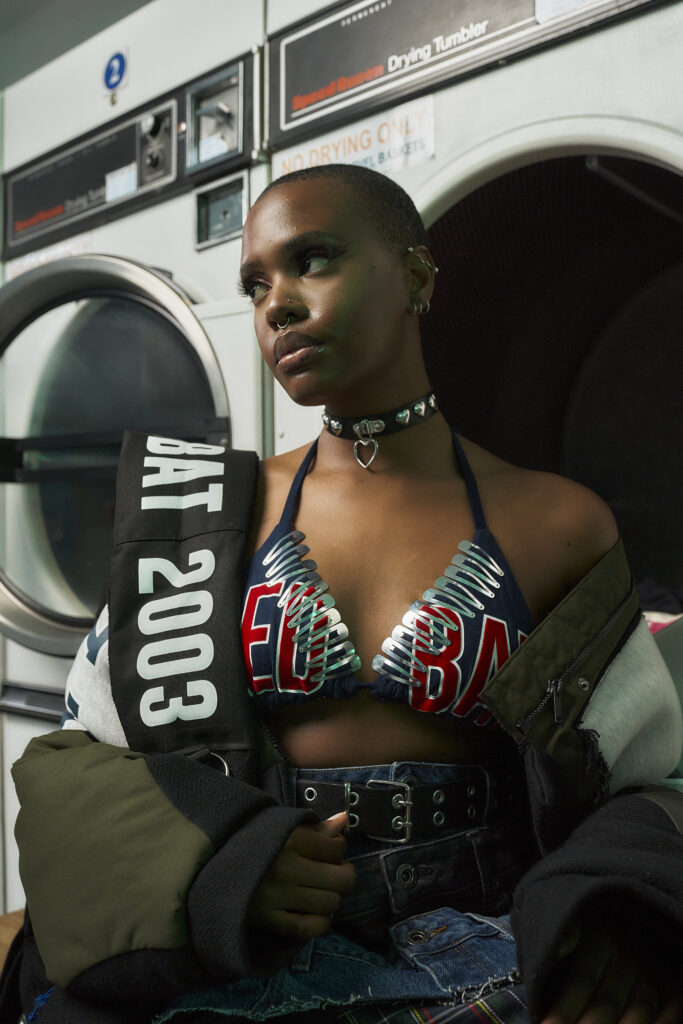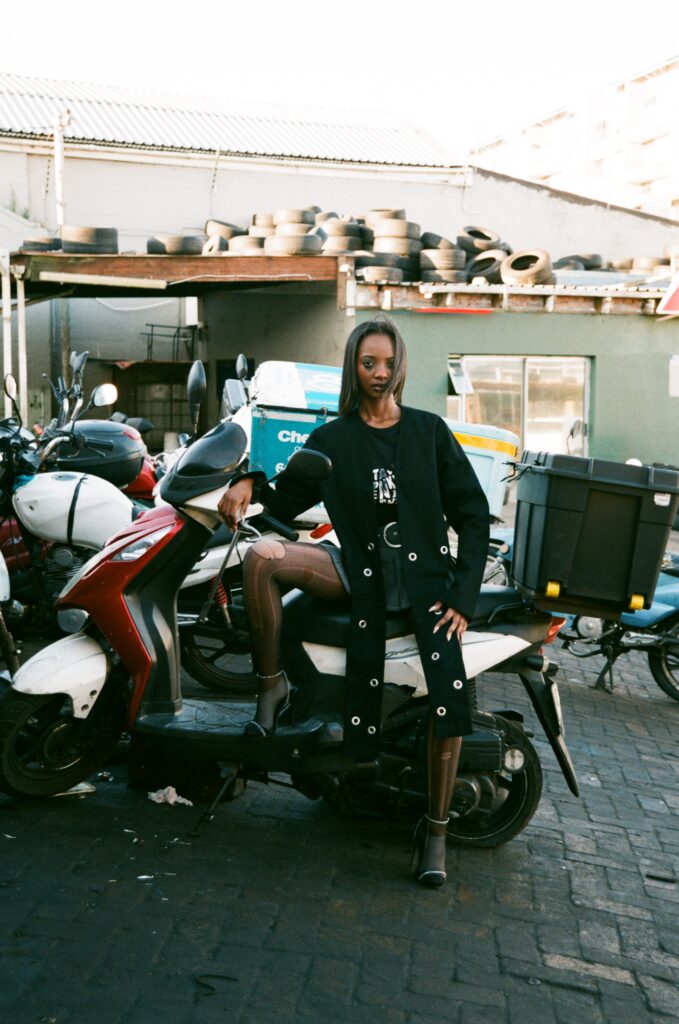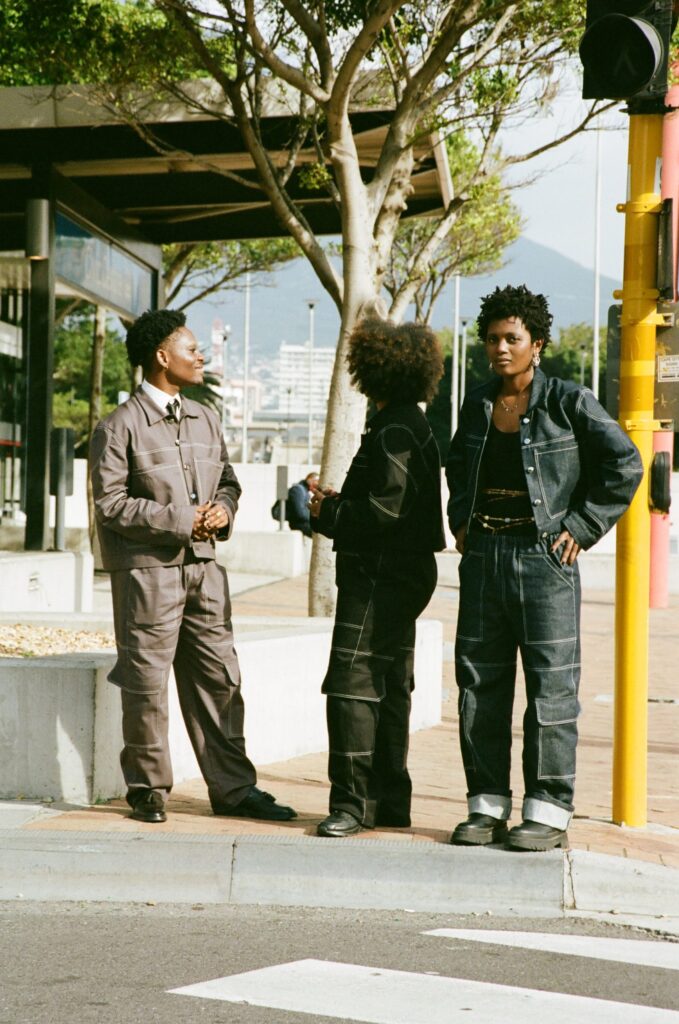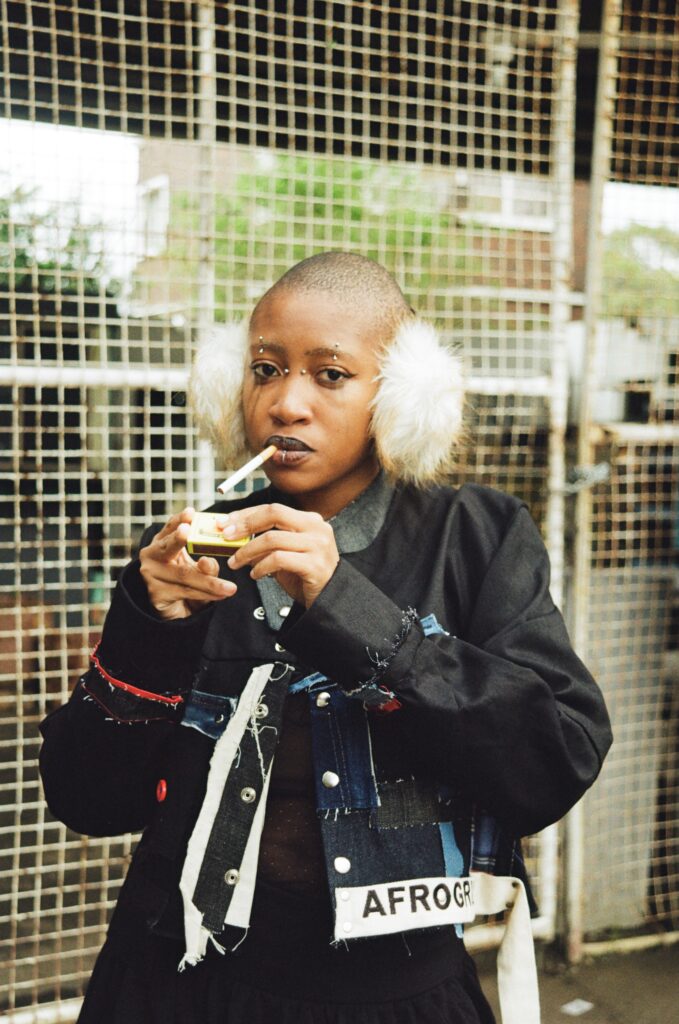Afrogrunge carries the kind of energy that does not wait to be understood. It steps into the room fully formed, unpolished, and unapologetically present. On Instagram, the brand’s world unfolds through grainy textures, dark palettes, bare concrete, and bodies that hold themselves with the quiet defiance of those who have always lived slightly outside the frame. Afrogrunge is not trying to imitate an aesthetic. It is trying to name an emotion. Created by South African designer Anita Hlazo, the brand began as a personal search for representation within a subculture that rarely made room for her. Growing up in Gugulethu, Hlazo gravitated toward the rawness of grunge music, the vulnerability inside the distortion, the idea of clothing as armour and confession. What began as a feeling eventually solidified into a design language that merges the grit of rock with the intimacy of township life. On the page, Afrogrunge’s silhouettes carry the tension of contradiction. Pieces are layered and oversized, yet always considered. Distressed fabrics sit next to precise tailoring. Mesh, denim, and reconstructed garments create a rhythm that feels improvised but never chaotic. The clothes evoke softness inside a hard exterior, like a diary written in capital letters. The effect is theatrical without ever feeling performative.
Afrogrunge’s identity is inseparable from its commitment to reuse and reinvention. Many of its pieces emerge from thrifted garments, deadstock textiles, or earlier samples reworked into new forms. The process is part of the narrative. Hlazo treats these materials not as leftovers but as archives, fragments of other lives that are coaxed into new meaning. There is memory inside the seams, and the brand never hides that. What distinguishes Afrogrunge is the clarity of its intention. While grunge fashion has often been romanticized as rebellion for rebellion’s sake, Hlazo roots her version of it in personal history and community. Her work suggests that alternative culture is not foreign to African youth. It simply lacked a mirror that reflected them back with honesty. Afrogrunge creates that mirror. It gives visual language to a generation that has moved between worlds, borrowing and blending until the distinction between influences feels irrelevant. When Afrogrunge steps onto the runway, the effect is striking. The clothes maintain their rawness, but they arrive within a more sculpted framework. Looks feel cinematic, as though pulled from a film about young people living on the edge of a city that has not yet learned how to hold them. There is an undercurrent of resilience in the posture of the models, a sense that the clothing carries both burden and release.




What makes the brand resonate is its emotional clarity. Afrogrunge speaks to the experience of feeling invisible inside the mainstream and misunderstood inside the margins. It offers a space where Black identity and alternative culture not only coexist but strengthen each other. The work does not try to soften itself for broader acceptance. Instead, it trusts viewers to meet it where it stands. Afrogrunge is not simply a fashion label. It is an atmosphere. It is a texture, a sound, a memory of adolescence spent searching for a place where quiet outsiders could exist without apology. Hlazo has built a universe that honors that search, and in doing so, has given South African fashion one of its most original contemporary voices.



